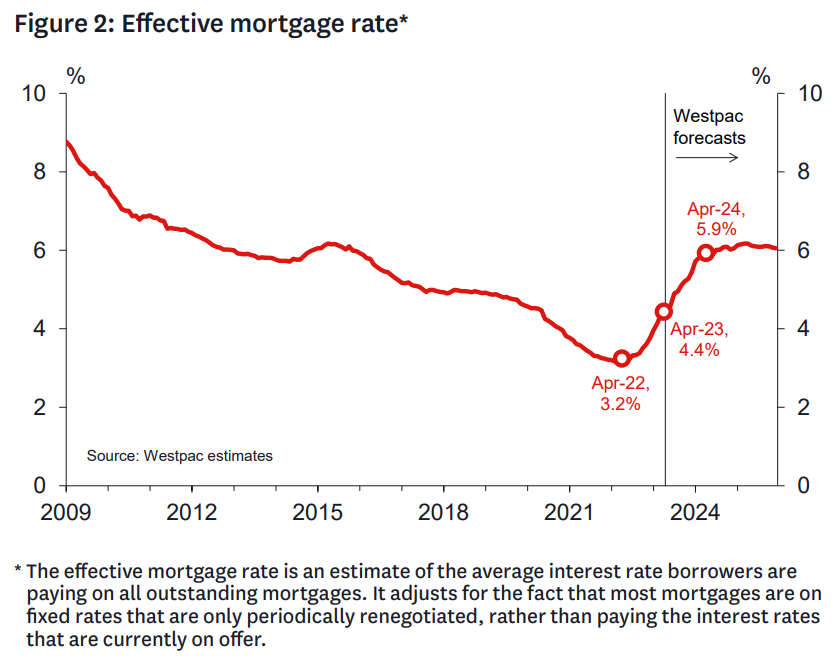ANZ’s Quarterly Economic Outlook tipped that New Zealand’s economy would “slip into recession in the second half of the year” as “the lagged effects of monetary policy” bite:

This forecast recession would be driven by “slower household spending, and reduced business and residential investment”:

Despite this sombre prognosis, ANZ still tipped that the Reserve Bank of New Zealand (RBNZ) would hike the official cash rate (OCR) further with “the risks skewed towards the RBNZ sooner or later deciding more is needed to get inflation down”.
ANZ’s Business Outlook Survey, released this week, showed “a bounce in a number of activity indicators”.
Wage growth is also becoming a “key concern”, with the proportion of firms reporting raising wages in the past 12 months remaining high at 83%, similar to the proportion expecting to raise wages in the next 12 months (84%).
ANZ, therefore, expects the Reserve Bank to be forced to lift rates higher later this year.
“The RBNZ perceives widespread sogginess across the economy, making them more relaxed about the extra stimulus being provided by super-strong net migration and more fiscal spending this year than anticipated”, ANZ noted.
“We aren’t so sure. Things are patchy, certainly, but most activity indicators are well off their lows and rising, while cost and price indicators are inching lower, rather than plunging”.
“Even the most interest-rate-sensitive sector, construction, is much less downbeat than previously”.
“We continue to expect that the RBNZ will be back at the hiking table by the end of the year”, ANZ concluded.
Westpac’s latest economic summary is even more hawkish, warning that inflation will remain stubbornly high necessitating an OCR peak of up to 6% (from 5.5% currently).
Westpac tipped New Zealand’s effective mortgage rate – defined as the average interest rate borrowers pay on all outstanding mortgages – to grow to roughly 6%, nearly doubling its low in April 2022 (3.2%):

The impact on mortgage holders will be nasty, and will “drain a large amount of cash out of households’ wallets”, according to Westpac.
The bank forecasts that “around 50% of all fixed rate mortgages will come up for repricing over the year ahead, and the average mortgage rate is set to rise by a further 150 bps by early 2024”.
“That will see the average household’s spending on interest costs increasing from around 5% of their disposable income in 2022 to 10% in 2024, and some borrowers will face much larger increases”.
The RBNZ has already hiked rates more aggressively than most other central banks:

By the looks of it, the interest rate screws will be tightened further.

